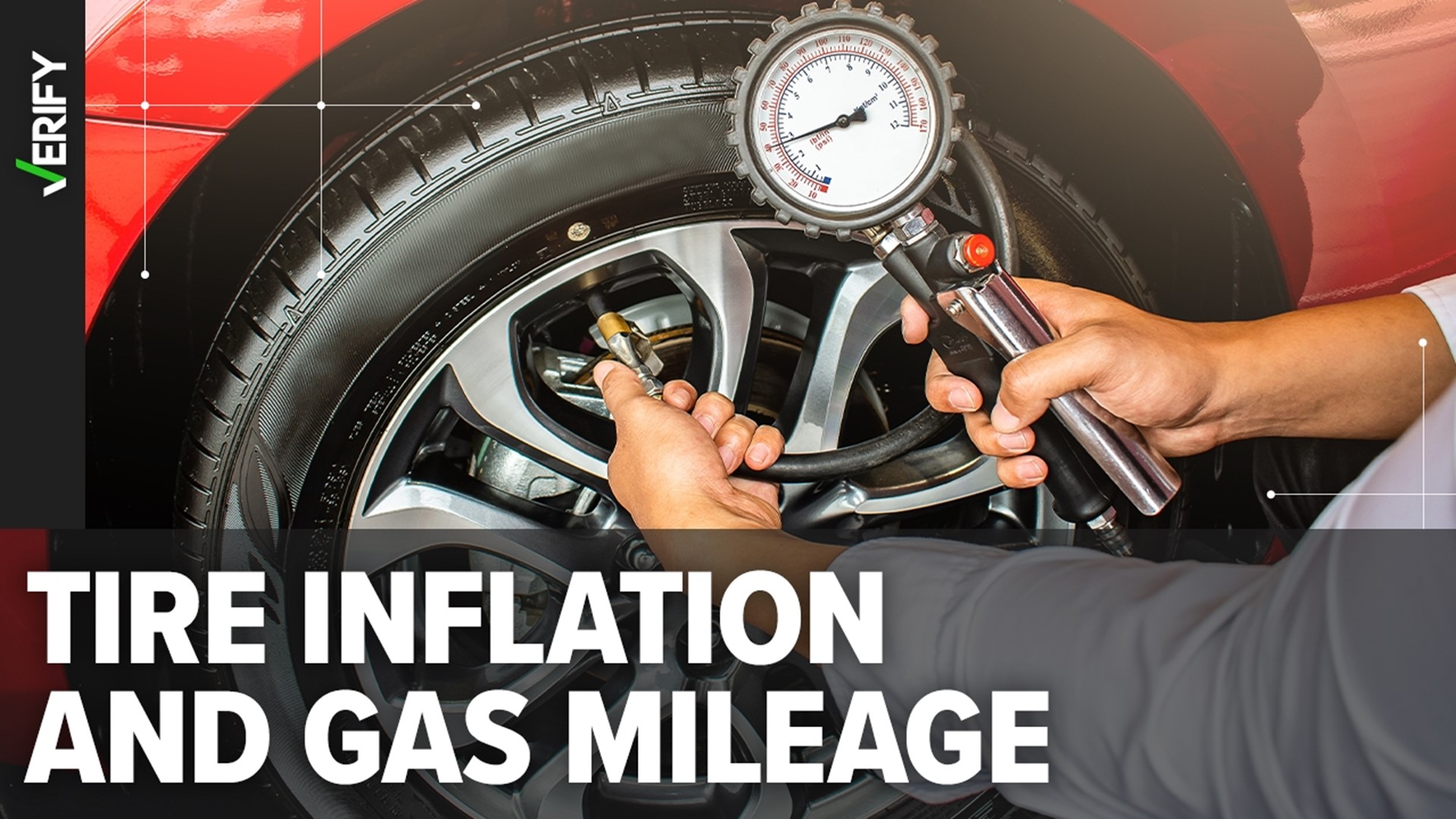On March 8, President Joe Biden announced that the United States will ban all Russian oil imports in retaliation for Russia’s invasion of Ukraine. Biden also acknowledged during his announcement that the ban would bring additional costs to Americans, particularly at the gas pump, saying, “Defending freedom is going to cost.”
The average price of gasoline in the U.S. hit a record $4.25 per gallon on Wednesday, according to AAA data. A. Whitney Brown, a writer and comedian best known for his work on Saturday Night Live in the 1980s, claimed on Twitter that if people properly inflated the tires on their cars, “it would more than make up for the oil we’re not getting from Russia.” Brown suggested that doing so would help people save around three to four percent of total fuel consumed.
THE QUESTION
Can properly inflating your car’s tires help improve your gas mileage?
THE SOURCES
- U.S. Department of Energy (DOE)
- Environmental Protection Agency (EPA)
- National Highway Traffic Safety Administration (NHTSA)
- AAA Automotive
- E. Dan Dahlberg, Ph.D., professor of physics and astronomy at the University of Minnesota
- Shean Huff, staff researcher at the Oak Ridge National Laboratory
THE ANSWER
Yes, properly inflating your car’s tires can help improve your gas mileage.
WHAT WE FOUND
A person can improve their vehicle’s gas mileage by 0.6 percent on average — or up to three percent in some cases — by keeping their tires inflated to the proper pressure, according to information on the U.S. Department of Energy (DOE) and the Environmental Protection Agency’s website fueleconomy.gov. That’s the equivalent of saving more than 10 cents per gallon of gasoline.
The DOE also says that properly inflated tires enhance safety, improve vehicle performance, wear evenly and prolong tread life.
“Under-inflated tires can lower gas mileage by about 0.2% for every 1 PSI (pounds per square inch) drop in the average pressure of all tires,” the DOE wrote. “Properly inflated tires are safer and last longer.”
The National Highway Traffic Safety Administration (NHTSA) also says drivers can save money by properly inflating their tires.
“Properly inflating your tires can save you as much as 11 cents per gallon on fuel. Yet only 19 percent of consumers properly inflate their tires. That means four out of five consumers are wasting money because of underinflated tires,” the NHTSA wrote.
“Additional proper tire maintenance, such as rotation, balance and alignment, can help your tires last longer, which will in turn save you money. In fact, properly inflated tires can extend the average life of a tire by 4,700 miles,” the NHTSA said.
Shean Huff is a staff researcher at the Oak Ridge National Laboratory — the largest multi-program science and energy research lab in the U.S. Huff also helps maintain fueleconomy.gov. He explained the science behind why tire pressure affects a car’s fuel economy.
“Properly inflating the tires is a way to minimize the amount of energy it takes to push the vehicle down the road. So as the tire pressure goes down below the optimum pressure, the tire deforms or flattens… and as the tire flattens, then it's more difficult for the tire to roll on the pavement, and then that requires more energy to move the vehicle down the road,” Huff told VERIFY.
The proper tire pressure for most vehicles is typically found on a sticker in the driver's side door jamb, the glove box and in the owner's manual, according to the DOE. The agency and AAA warn against using the maximum pressure typically found printed on the tire's sidewall because this indicates the pressure needed to meet the tire’s full rated load-carrying capacity, not the pressure specified for your particular vehicle.
Outside of making sure your tires are properly inflated, the DOE and EPA share more fuel-saving tips online, such as removing excess weight from the inside of the car, avoiding excessive idling, using cruise control and avoiding aggressive driving, such as speeding, rapid acceleration and braking.
“If you look on the freeways today, everybody goes over the speed limit — but by just driving the speed limit, you would save gas. By leaving a greater distance between you and the cars in front of you, and not being so aggressive on the brakes, you'd save a lot of gas,” E. Dan Dahlberg, a professor of physics and astronomy at the University of Minnesota, told VERIFY.
More from VERIFY: No, you can’t tell if the gas at the pump comes from Russian oil

